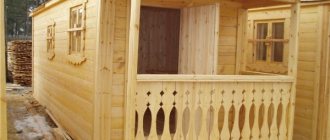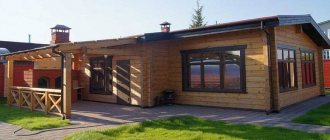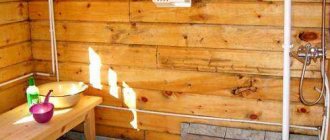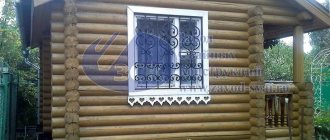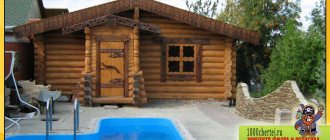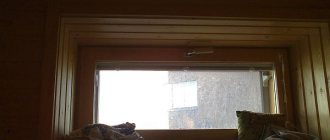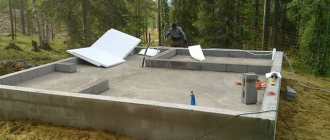Approximately 80% of saunas are built incorrectly. Healing steam from hot stones will not give the desired effect due to cracks in the walls, uninsulated floors, incorrectly selected facing bricks, poorly constructed heaters, and ill-conceived ventilation. Therefore, it is worth considering 6 mistakes that many people make when building a bathhouse and do not want to correct them.
>
Unsuitable insulation
A layer of insulation is installed into the floor and often under the wall cladding. To do this, use aluminum foil or other non-foamed building materials with a shiny coating. They are more reliable because they are not affected by high temperatures.

Location, foundation, frame assembly
First, they design the structure, select the material, and calculate the costs.
This also applies to common mistakes during construction, when a building is erected without diagrams “by eye”. As a result, the sauna will turn out to be asymmetrical, and cracks will form in the walls.
Things to consider:
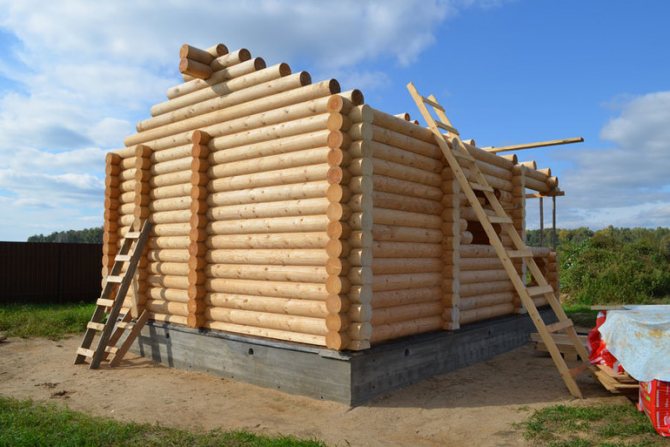
- Location . The steam room is placed on an area 5 m from the house, 4 m from outbuildings, 1 m from trees, 1-2 m from the fence. If a bathhouse is built on the boundary with another yard, then the roof slope is directed to its own site. That is, water should not flow to the neighbors.
- Foundations . The type of foundation for construction depends on the type of soil. In swampy areas or heaving soil, a pile foundation consisting of metal pipes is used. When installing support pillars, you need to take care of insulating the floor, since there will be a gap between the ground and the bottom of the steam room. The tape base is mounted on stable soil. For such a foundation you will need a lot of sand, cement, crushed stone, reinforcement, and you will also have to construct formwork. You cannot raise the base walls with porous blocks; they will easily burst under the weight of the sauna.
- Log house The wooden box is the body of the bathhouse, and any mistake in laying the logs will lead to the formation of cracks and distortion of the structure. Trees are harvested in winter because there is a minimum of sap in the trunk. This material does not deform in the sun. The crowns are fitted tightly to each other. To do this, make an even cut on the logs. The finished log house shrinks, so the building is left alone for six months, then they begin finishing. Otherwise, the windows will burst and the cladding will fall off. The box is caulked with nettles or pink moss.
The bathhouse has been in use for years, and fire safety needs to be taken care of. For example, if the chimney is hot, and the roof is wooden and a soft roof is used, then in this case there is a risk of fire in the building. The brick pipe is sheathed with metal so that there is a void between the walls; the space is filled with sand or mineral wool.
Mistakes when choosing a stove
When purchasing a stove, its power is often not taken into account. In addition to the steam room, heat is also expended in other rooms. The volume of air that can heat the stove should be 35% greater than the existing volume of the steam room. The chimney also depends on its size. When it passes through the roof, a fire-passage assembly is installed. It is better to choose the design itself without bends, which contribute to moisture loss and burning of the pipe.
The stones required for the stove must not form sulfur oxide, which is harmful to health. A test glow will help determine the strength of the material and the presence of dirt on them.

“80% of bathhouses are built with errors”: we analyze fatal mistakes with an expert
Many people dream of having their own bathhouse, but having realized their dream, they are often disappointed: relaxing in a steam room does not bring the long-awaited pleasure. The reason lies in errors in design and construction. “Approximately 80% of steam rooms are arranged incorrectly,” says expert technologist, founder of his own steam bath school, Viktor Sedov. He has been building baths and saunas for more than 20 years, and agreed to share with Dom - expert . by tips on how to avoid the most common mistakes.
How do you become a sauna expert?
At one time I was professionally involved in downhill sledding and received the title of Master of Sports of the USSR, but then I suffered a serious injury. I didn’t want to leave sports completely, so I became a sports massage therapist, doing coaching at the same time. From 1979 until the early 90s he worked in the Russian Bratsk. And in the matter of restoring the body after training and competitions, the bath is the most important thing. Therefore, I began to participate in the construction of baths and learned to understand them. And when I returned to Belarus in the 90s and decided to open my own business, the question was “what to do?” didn't even appear.
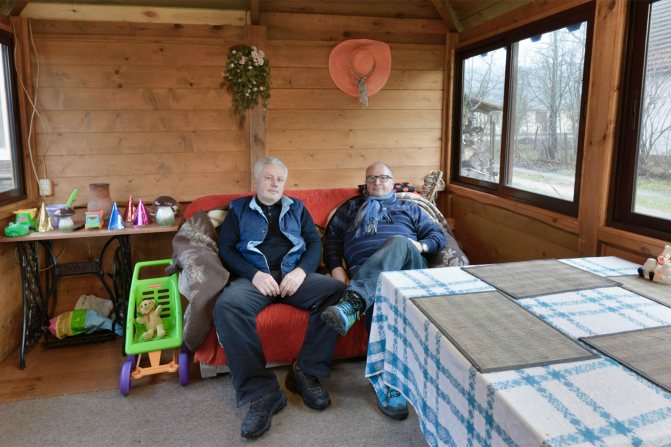
Viktor Sedov (right) with his colleague
80% of baths are actually built with errors
During my life, I have seen many bathhouses in different countries: in Belarus, Russia, the Baltic states, Poland, Austria... There were both good and bad among them. By what criterion do I judge? First of all, how you feel when steaming with brooms: if you steamed with pleasure, if you want to come to this bathhouse again, it means everything was done correctly. And if the sensations after the steam room are unpleasant, if there is no expected relaxation, then this means that the sauna was not done quite correctly. So, of the hundreds of bathhouses I have seen, about 80% were built with errors. Although, it would seem, there is now plenty of information: books, articles in magazines and the Internet - take it and use it. But it is through these sources that incorrect, unprofessional technical solutions are spread, which people, due to inexperience, pick up and repeat in themselves.
There are a lot of options for bathhouses, but we will talk mainly about the classic Russian bathhouse, which is built from wood. The most important thing in a bathhouse, as in a building, is a properly designed and functionally equipped steam room. Let's look at the most common mistakes when constructing them.
Size matters
Mistakes are made even at the design stage, when the size of the steam room is too small. Yes, not everyone has a lot area that allows them to build a huge bathhouse: you can’t walk around on the conditional 6 acres. But there are proportions that have been proven by experience. The ideal shape for a steam room is a cube. For a bathhouse with an L-shaped shelf, the length, width and height of the steam room must be at least 2.65 m. These dimensions are enough to broom one person lying down, while 2-3 more are sitting on the next shelf. There must be at least 1.3 m² of floor space per person in a Russian bathhouse (for family-type steam rooms).
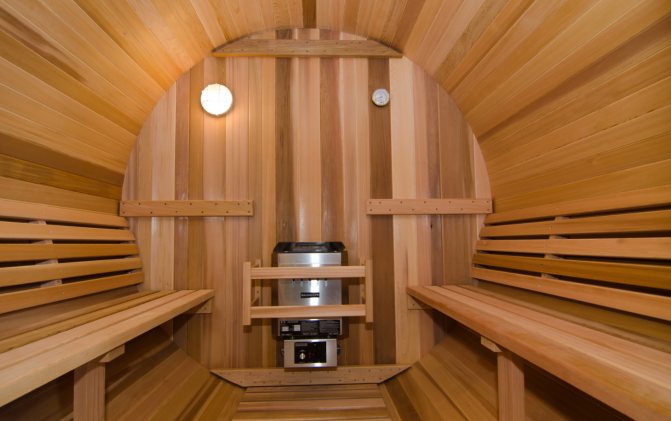
When the bathhouse is a pipe
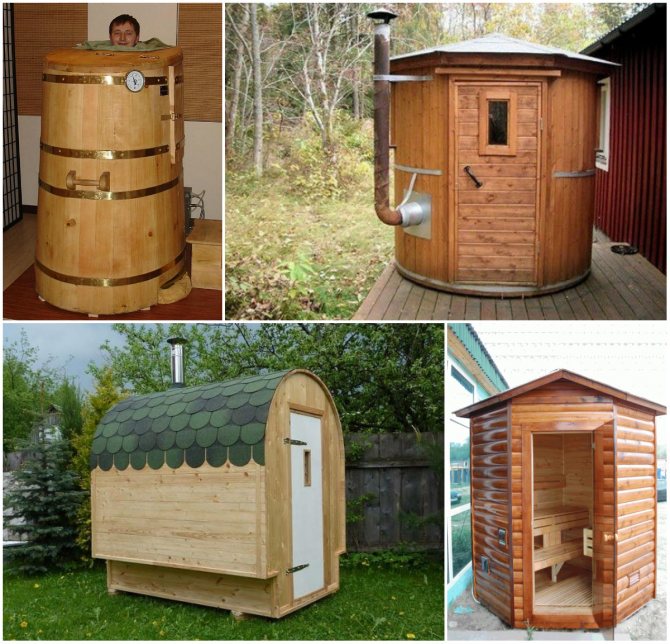
Size matters. And this is not the size you need.
The shelves should be positioned so that the steamer can work comfortably with both hands. When a steamer is forced to use only one, this means that the ergonomics of the bath are not thought out. If funds allow, the steam room can be made more spacious: for example, to steam with 4 hands, i.e. by 2 bathhouse attendants. To do this, a separate shelf is installed in the steam room as a massage table. In large baths there may be several working areas for steamers, but, I repeat: the required minimum space allows one person to steam with two hands. Therefore, we always start designing with a steam room, and plan the washing room and relaxation room in the second place.
Why are folding shelves needed?
The shelves in the baths have 2 or 3 tiers. I recommend making the bottom one folding or sliding. For what? Imagine that you have climbed to the very top, and a man with brooms comes up to steam you. But the fixed bottom shelf will rest against his feet, which is very inconvenient. And if you stand on the shelves, the steamer’s head will be under the ceiling, where it is hottest. But if the bottom shelf folds back, he can come closer, steam the person on the top without getting a heatstroke. The width of the shelves should be at least 80-85 cm: with such dimensions, arms extended along the body will not hang down.

One of the pairs, made by Viktor Sedov. Shelf size is optimal
Why ventilation is important
In many baths there is no ventilation at all: perhaps some kind of vent, valve, valve, symbolic “window”. But without normal air circulation in the steam room, especially with a large number of people steaming, carbon dioxide quickly accumulates, causing headaches. And the temperature in such a bath is difficult to regulate.
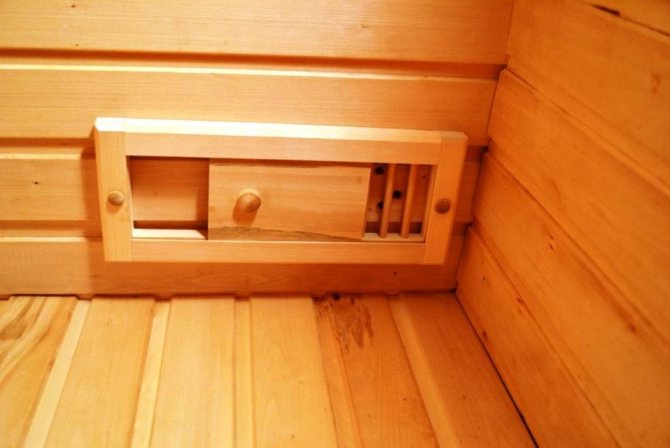
Proper bath ventilation consists of three levels: supply, control and exhaust (designed to discharge waste steam and high temperature). Supply ventilation is located below near the stove: it is usually done in the door area. Fresh cold air is supplied through it.
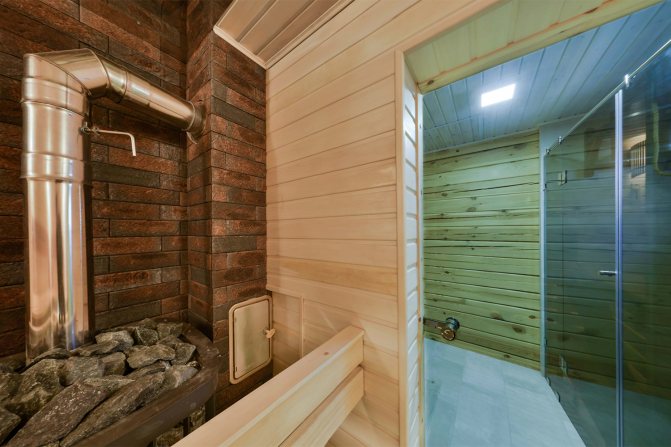
Steam room by Viktor Sedov. The oven is located near the door
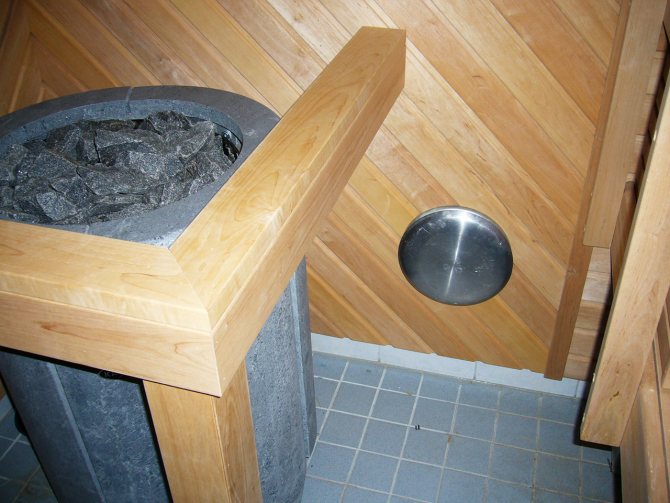
Another option for the location of the supply ventilation duct
The outlet channel is installed in the wall opposite the stove, at a small height from the floor. The system works like this: hot air rises to the ceiling and displaces cold air, which exits through the control channel. When the room has warmed up enough and it’s time to prepare steam, the control channel is closed. And you start pouring water on the walls, ceiling and stones.
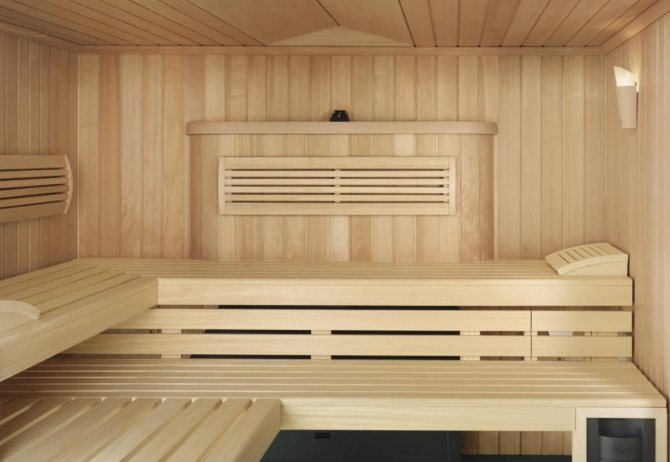
The ventilation duct can be beautifully integrated into the interior of the steam room
And the outlet channel is located on the ceiling: it is opened to cool the steam room if it is overheated or the temperature needs to be lowered. This is how we get the conditions of a Russian bath with an average temperature of 60 degrees and a humidity of 60%. The same ventilation system can create the conditions of a Finnish sauna: in this case, we do not water the walls and stones, but leave the control channel half-open. This way the temperature is maintained at 90-100 degrees with a humidity of 15-25%.
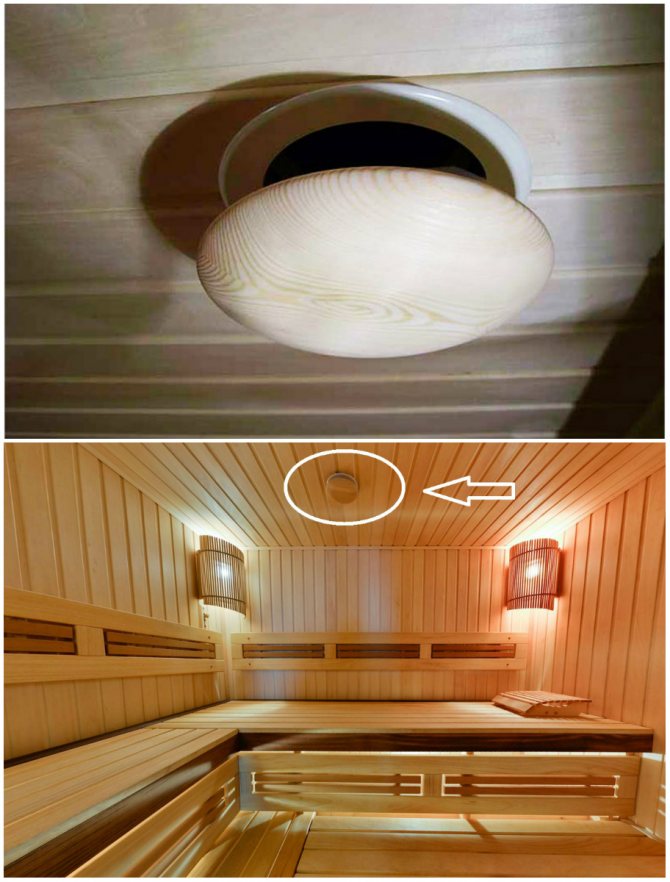
The ventilation duct is organically integrated into the interior of the room
If the steam room along the floor and walls is not a square, but an elongated rectangle (and there are a lot of them), an additional level of forced ventilation is required, otherwise the room will not warm up evenly.
The stove is the head of everything
The stove is the head of everything, and its choice is a topic for a separate discussion. Usually I individually recommend to the client one or another model that suits him in terms of functionality, size and finances. There are two types of stoves that are most popular now. The first is closed, in which the stones are heated from 400 degrees and above.
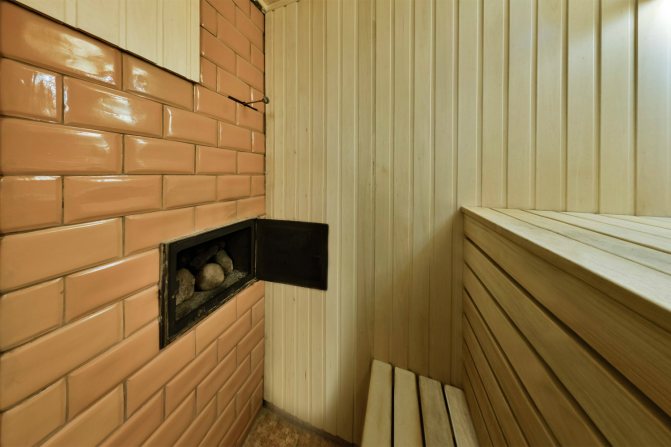
The second type is basket stoves, with a volume of stones of 150-200 kg or more (versus 60 kg for a closed one). In addition, “baskets” have higher fire safety: the stones serve as an additional insulator between the stove and the wood.
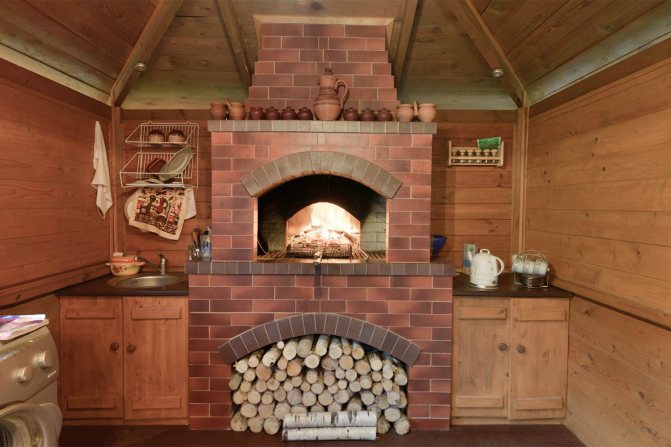
The oven can be like this...
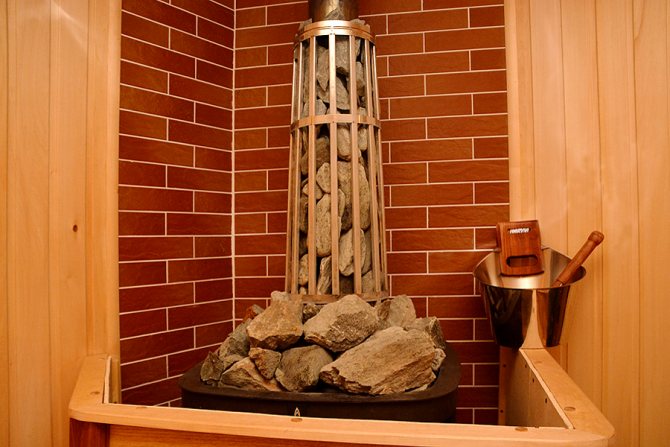
...but this option is more economical and will suit most people who like to take a steam bath
But no matter what stove you choose, you need it to match the volume of the steam room. Too weak - it will not provide the necessary conditions, too strong - it will overheat the room. In both cases, you will not get pleasure from the bath. Therefore, carefully read the technical specifications: manufacturers clearly indicate what volume of the steam room the oven is designed for. Moreover, you need to choose it with a small margin: if you have a steam room, for example, with a capacity of 15 m³, then buy the next highest level heater - with a capacity of 20 “cubes”.
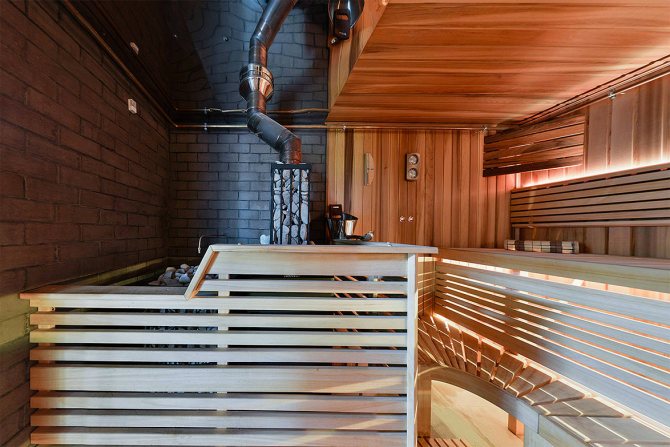
Large steam room in the wellness area by Viktor Sedov. A system with two furnaces operating in tandem was used
In a well-designed steam room, the stove is installed near the wall where the door is located. Firstly, air comes from under the door. Secondly, the steam room space with this arrangement is used most rationally.
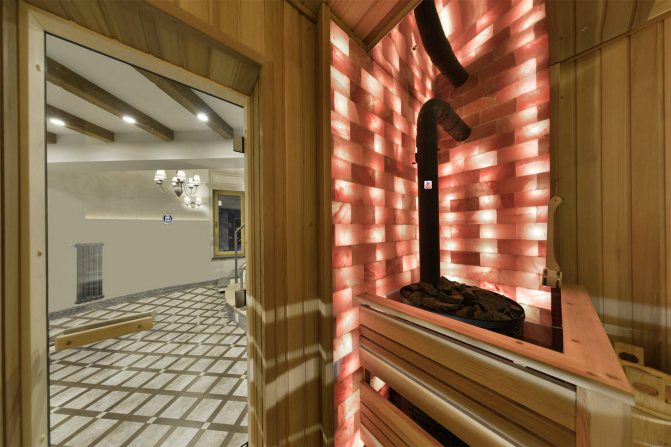
The oven is located near the door. This is the correct location.
The length of the stove chimney is also important. A chimney that is too short will overheat and will not provide the required draft. Therefore, follow the recommendations of the stove manufacturer: for a heater designed for 10 cubic meters. you need 4 m of chimney length, for 15 m² - 5 cubic meters. etc. I do not recommend bending the pipe: ideally, it should be straight, otherwise a loss of traction and burning of the pipe at the bend site is possible, followed by a fire in the bathhouse. Double-circuit chimneys of the “sandwich” type have proven themselves very well: they are more fireproof and condensate, harmful to the stove, evaporates faster.
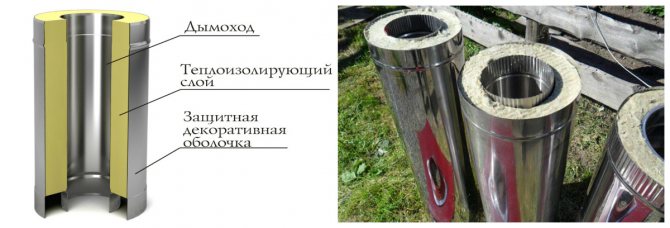
Sandwich chimney
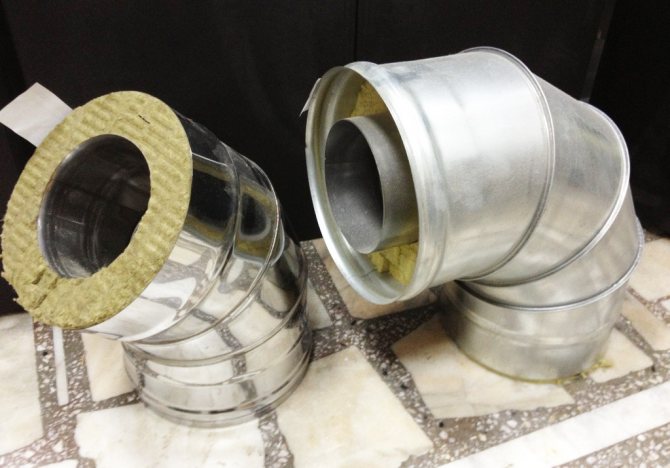
Water supply and sewerage
Cold and hot water must be supplied to the steam room. There is such a procedure - pouring, when after steaming a person is doused with cool water (but not hot or cold) with a broom. Therefore, a mixer and a shelf for a gang and a steamer are installed in the steam room.

There should also be a channel for water drainage in the steam room so that you can wash the room with a hose. For this purpose, a sewer drain is made: linear, square or round. The linear one is located along the door, and the square or round one is located in the center, in front of the door.
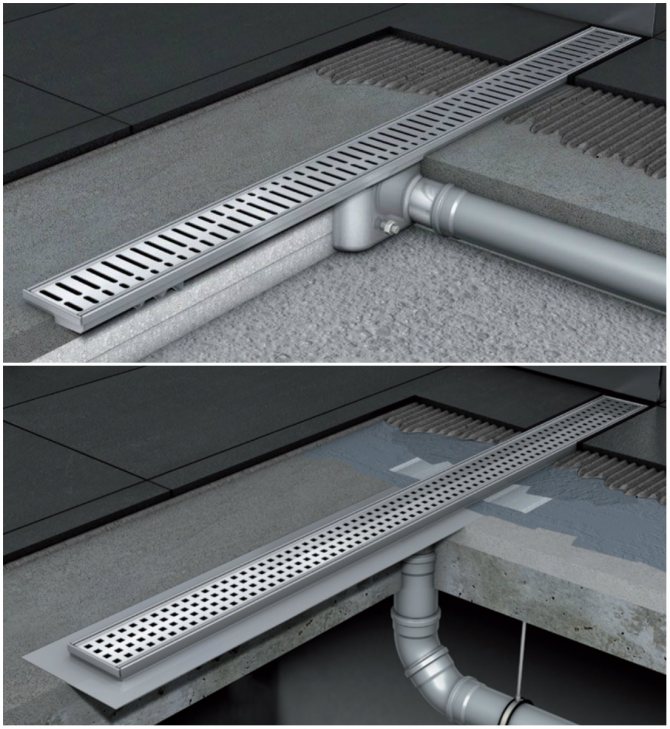
To ensure that the water drains completely, the floor is equipped with a slope of 2-3%. In general, it is better to have heated floors, since when descending from a hot shelf onto a cold tiled floor, you can get a heat stroke. With warm floors it is more comfortable, and the steam room quickly reaches the required conditions.

Why are the bathhouses burning?
Saunas burn very often and burn out very quickly: on average in 7 minutes. Why does this happen?
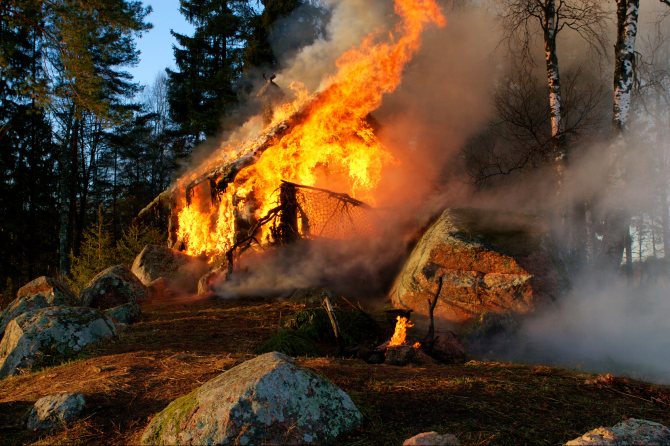
The main cause of fires is improper installation of the chimney and non-compliance with fire safety technology. In the place where the pipe passes through the wooden floors, a special structure must be put on it - a fire-passage unit. In addition, the beam system, where it comes close to the chimney, is upholstered with heat-insulating materials. Yes, this requires additional costs, but you cannot skimp on safety: it will be excruciatingly painful if the thousands of dollars invested in the bathhouse turn into smoke and ash.
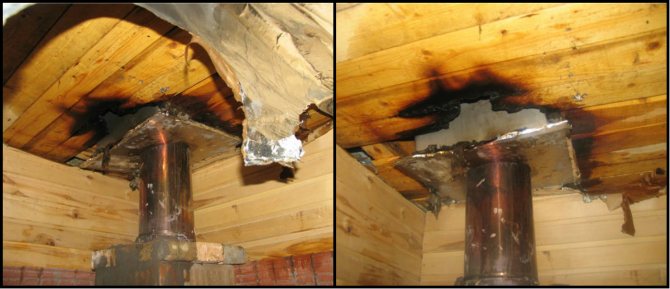
The second reason is the small steam room, which is why the stove is placed too close to the wall or shelf, and the wood begins to smolder. The third is the lack of grounding and lightning protection systems. Yes, discharges rarely hit the bathhouse, but if this happens, everything will burn. I personally know a person whose unfinished bathhouse had ball lightning fly through the chimney and explode in the stove...
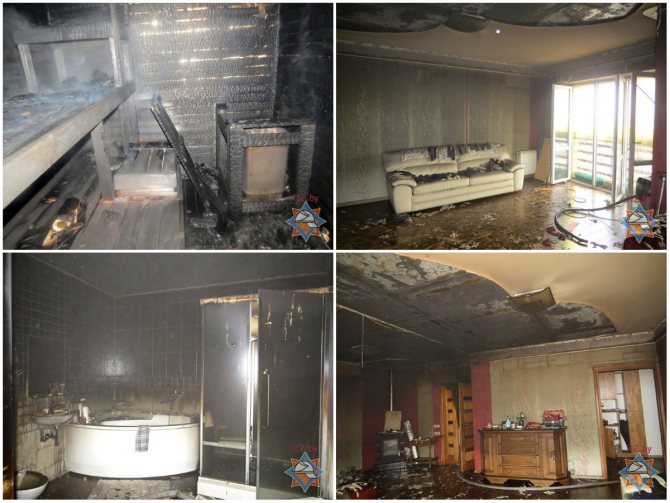
A sensational bathhouse fire in a Minsk apartment on the 17th floor. The fire occurred due to the stove being too close to the wooden wall and the lack of a heat shield. And almost the entire apartment burned down
How to choose a contractor
Now everyone is taking on the construction of a bathhouse, promising to do it well and cheaply. But there is a certain average market cost of materials and work. And if you are offered too low prices, it is better to refuse the services of such a contractor. I also do not advise you to contact those who provide construction services illegally: in this case, you have no guarantees. You need to hire an individual entrepreneur or a company with UNP, state registration and a good reputation. Naturally, a written contract must be concluded: you will be legally protected, and in case of poor quality work, you will be able to hold the contractor accountable.
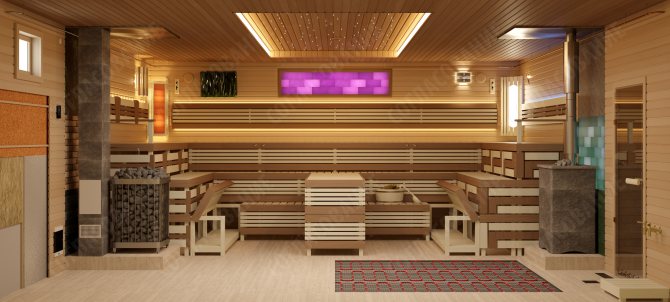
Sample project for a pair by Viktor Sedov
Be sure to ask the contractor to show photos of his previous work. If there are none, very few, or they arouse suspicion, it is wiser to refuse his services. A serious specialist who has been working in this market for a long time always has an established portfolio. In addition, he must make a project or at least a schematic plan of the future bathhouse with internal layout and dimensions. (For example, we also make full-fledged graphic visualizations). Only amateurs build baths by eye. Be careful.
From the editor: a complete list of Viktor Sedov’s works can be found on the website https://saunastroy.by/ or stroybania.ru, and you can get all the necessary advice by calling + 375 29 647 22 04.
Ask an expert a question
Treatment with antiseptics and fire retardants
Since we are talking about a bathhouse, we will immediately say that there is one (at least) room in which wood processing is undesirable - this is a steam room. But even for this, compositions have now been developed that have passed European safety testing and can be used in a sauna. We mean Finnish impregnations and varnishes for steam rooms.
In other rooms, it makes sense to treat the bathhouse timber with conventional impregnations for residential premises , because both antiseptics and fire retardants significantly increase the service life of the wood.
RECALL that antiseptics help in the fight against fungi and bacteria, and can also protect against insects, and fire retardants are compounds that reduce the flammability of wood, with varying degrees of protection, which also needs to be paid attention to.
Impregnations for timber differ in the area of application - inside and outside.
What to soak inside
The ideal option from a safety point of view for people is to impregnate the inside of the sauna beam with oil- and/or wax-based compounds. The companies that produce such impregnations are basically the same, and in addition to oils, waxes and oil waxes, they also produce a variety of antiseptics for internal and external use.
You can prepare the oil yourself; it is made on the basis of linseed oil, but here it is important to know that drying oil is, of course, linseed oil, but is not suitable for impregnating a bath.
Paraffin oil also works well on wood, protecting it from water. In general, all oil and wax impregnations only protect against water . Wax, of course, has some bactericidal effect, but it is weak and cannot be compared with a real antiseptic. Industrial wood processing has an even greater level of protection, making it possible to obtain lumber with special parameters - impregnated wood.
If blue stains (this is a fungus) appear on the timber, it is quite possible to get rid of it inside the bathhouse using compounds based on bleach. In principle, it could even be “Whiteness”. Why is bleach safe? Because it fades away. Of course, you should not use the sauna immediately after treatment. By the absence of smell, you will understand that it is time.
To get rid of fungi, including mold, there are various compounds that are harmful to humans . Of course, you can’t allow mold to spread, but you won’t be able to use the sauna after treatment for some time (sales consultants should tell you this). Ideally, you need to find and eliminate the cause of non-evaporation of moisture after the procedures, and at the same time treat the wood with an antiseptic against mold.
Treatment of timber can be preventive and as a way to eliminate a particular problem . Even preventive treatment can be carried out in two stages: before laying the timber and after.
ADVICE! If possible, use compounds made by Finns, there is still some kind of quality control.
As already mentioned, for the steam room inside - only the compositions that were developed for it. Plus hydrogen peroxide or chlorine bleach. In the case of mold control, use special products like Mikaut.
What to treat outside
There is more freedom here. You can start with a primer antiseptic, and then cover the timber with glaze, which can be tinted as you like. This way you will achieve the following goals: thoroughly saturate the wood with an antiseptic (and if the composition is good, then also protect it from ultraviolet radiation and some other misfortunes), leave the texture of the wood visible, give the structure a shade that you like.
You can treat the timber outside the bathhouse with fire retardants, antiseptics , as well as complex products. There are not many companies that have been known to consumers for a long time, so the main choice is between a domestic and an imported manufacturer.
It is worth noting that impregnations for timber are water- or oil based. The latter are recommended for those areas of the external surface of the bath that are often exposed to water . Water-soluble ones in such cases are just undesirable, or can be used taking into account the need for periodic renewal.
*** We have materials devoted to all types of paints, varnishes and impregnations both inside and outside the bathhouse. A separate publication is devoted to impregnations for shelves - bath furniture. And if you look through the pages of the site, you will find a lot more interesting and useful information about bathhouse roofs, ventilation, windows and doors.



